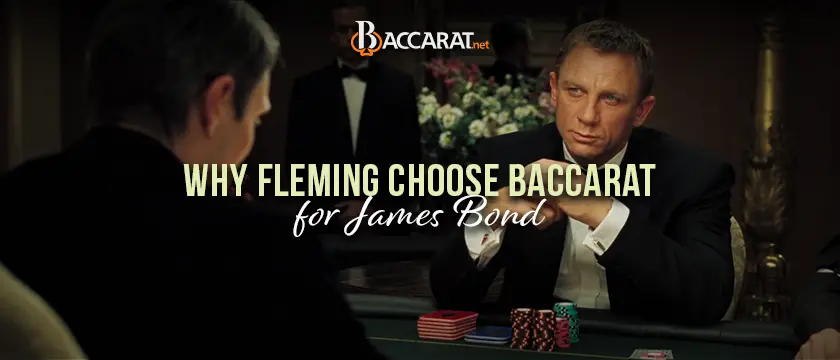How Ian Fleming Chose Baccarat for James Bond

It is well known that James Bond’s favorite casino game is baccarat, but have you ever thought about why Ian Fleming, the creator of the world’s most famous spy, chose baccarat rather than another casino game?
While it is hard to give a definitive answer, there are a number of likely reasons, such as the popularity of baccarat in 1950s and 1960s Britain and the way the game lends itself to high-stakes drama.
While today, everyone can enjoy online baccarat on any budget, during the time when the novel was written, the playing of Chemin de Fer in Europe’s casinos would have been drawn exclusively from the upper echelons of society.
Fleming’s Knowledge of Baccarat
As mentioned above, baccarat was popular with players in Britain in the mid-20th century.
Furthermore, according to Andrew Lycett’s ‘Ian Fleming’, widely considered to be the definitive biography of the author, Fleming himself was a fan of the game. In his book, he recounts the story of Fleming’s trip to the Estoril Casino in Portugal with the director of the Naval Intelligence Division during WWII, which saw the two play several games of Chemin de Fer. As such, it is safe to say that Fleming had a good knowledge and understanding of the game.
However, Bond has always been very adaptable and the stories are regularly updated for modern audiences. It is perhaps because of this that in the 2006 film version of ‘Casino Royale‘, the game was changed to Texas Hold ’em poker, which modern audiences are likely to be more familiar with.
Balancing Technical Details with Drama
Returning to the book ‘Casino Royale’, Fleming enters into great detail about how the game is played. When Bond approaches the baccarat table where La Chiffre is seated, there is a detailed explanation of the rules of the game. Bond asks La Chiffre several questions and then once Bond takes his seat, readers are treated to an insight into Bond’s tactics:
“From the decision to stand on his two cards and not ask for another, it was clear that the Greek had a five, or a six, or a seven. To be certain of winning, the banker had to reveal an eight or a nine. If the banker failed to show either figure, he also had the right to take another card, which might or might not improve his count. Le Chiffre’s hands were clasped in front of him, his two cards three or four inches away. With his right hand he picked up the two cards and turned them face upwards on the table with a faint snap. They were a four and a five, an undefeatable natural nine. He had won.”
The rules of baccarat are very simple. Had Fleming chosen a different game, such as poker, it would have been difficult to strike a balance between tension and technical explanation. As the scene continues, Fleming is able to describe each hand using just one or two sentences, giving him plenty of space to build a sense of the tension around the table.
The Sophistication of Baccarat
Baccarat has long been associated with the aristocracy and upper classes, and this was even more so the case during Fleming’s day. As such, by having Bond play baccarat it showed that he was a truly suave character, capable of blending with society’s elite.
Slightly contrary to this are stories of a young Fleming meeting the so-called ‘Greek Syndicate’, a group of ship owners who operated the casino at Deauville. Amongst the group was Nicolas Zographos, also known as “Nicky the Greek” and according to an article in Time magazine from 1931, he was the “greatest gambler in Europe”. Zographos was the head of the gambling syndicate that operated the casino’s baccarat banks. According to contemporary accounts, Zographos had a cool and stony demeanor and was widely considered a mathematical genius. As such, many believe he served as part of Fleming’s inspiration for Bond.
However, whether Zographos was considered sophisticated or not is further evidence of Fleming’s exposure to the game. Combined with its inherent simplicity and excitement, and contemporary audiences’ knowledge of baccarat made it the perfect choice of game for James Bond.



